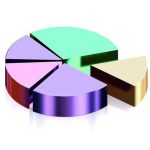Water Quality Improvement Tools
Water Quality Improvement Tools
Tools for Improving Water Quality
Flow Diagrams- A flow diagram will give you a graphic view of the necessary requirements for a specific result. This tool can be used to provide clarity with the procedures used to regenerate a softener or the actions needed to fix an upset in a cooling tower. These typically are used to give everyone similar insight of the global process when problem solving.
Brainstorming- Having multiple people familiar with the processes meet to come up with new and useful ideas will help in diagnosing the problem. The group of individuals can talk about all possible solutions and analyze those solutions with value.
Cause-Effect Diagrams- An essential process in quality improvement begins with identifying the root cause to the problem. Using a cause-effect diagram allows you to organize and view the various ideas of what those root causes could possibly be.
Scatter Diagrams- A scatter diagram is favorable in providing a clear, graphic representation of the exchange between two variables. An example would be boiler feedwater iron levels plotted as a function of feedwater pH to confirm or rule out a cause-effect relationship.
Pareto Analysis- Being able to rank the cost of various problems and comparing factors related to a quality problem is the main purpose of using Pareto analysis. It uses a graphic visual to pinpoint and focus the vital factors or issues.
Histograms- The visual attribute of a histogram will show patterns that are harder to see in a simple table of numbers. Using a histogram will allow you to view a variety of data in a group of numbers, ranges, and data collection over time through a bar graph visual. With this type of data you can view patterns that represent problems that need to be corrected. You must determine the cause of the occurrences and solve them to create a more predictable and desirable pattern.
Meaningful Data Collection- Using meaningful data collection and facts is a crucial tool in making improvements within the water quality. Oftentimes, problems can go unnoticed due to a lack of imperative information. Finding a good data collection tool is necessary to record accurate and relevant data. For this to work properly you will need to identify any potential sources of bias and how to address said bias.
- Exclusion bias: If a section of the process being investigated has been excluded, your results will be biased if your data is supposed to be collecting data on the process as a whole.
- Interaction bias: The action of gathering data itself can affect the process being viewed. An example is if cooling tower treatment levels are being documented by the central laboratory, the operator might want to conduct his own data.
- Perception bias: The opinions and attitudes of data collectors can influence how they perceive and document. If an operator views a process as his obligation, he might document that everything was running normal in his area.
- Operational bias: Deficiency to follow the approved procedures is a frequent operational bias.
Graphs and Charts- Visual representations of quantitative data, such a pie charts, bar graphs, and line charts, can summarize copious amounts of data in a small area to convey complicated situations more clearly.
Statistical Process Control- Statistical process control is using statistical methods to study, analyze, and control the variation in any process. By using this you will be able to pull worthwhile information about a specific process to make corrective action when needed and implement that action. Unlike the visual aspect of a histogram, this process will determine mathematically whether or process is stable or unstable, predictable or inconsistent. The statistical process control uses historical data to calculate the lower and upper statistical limits as guidance for forthcoming operations. If something is landing outside of the statistical confines it is considered to be a special cause of variation which needs urgent attention. Improvement of processes is needed until statistical confines are tightened to the place of acceptability.


